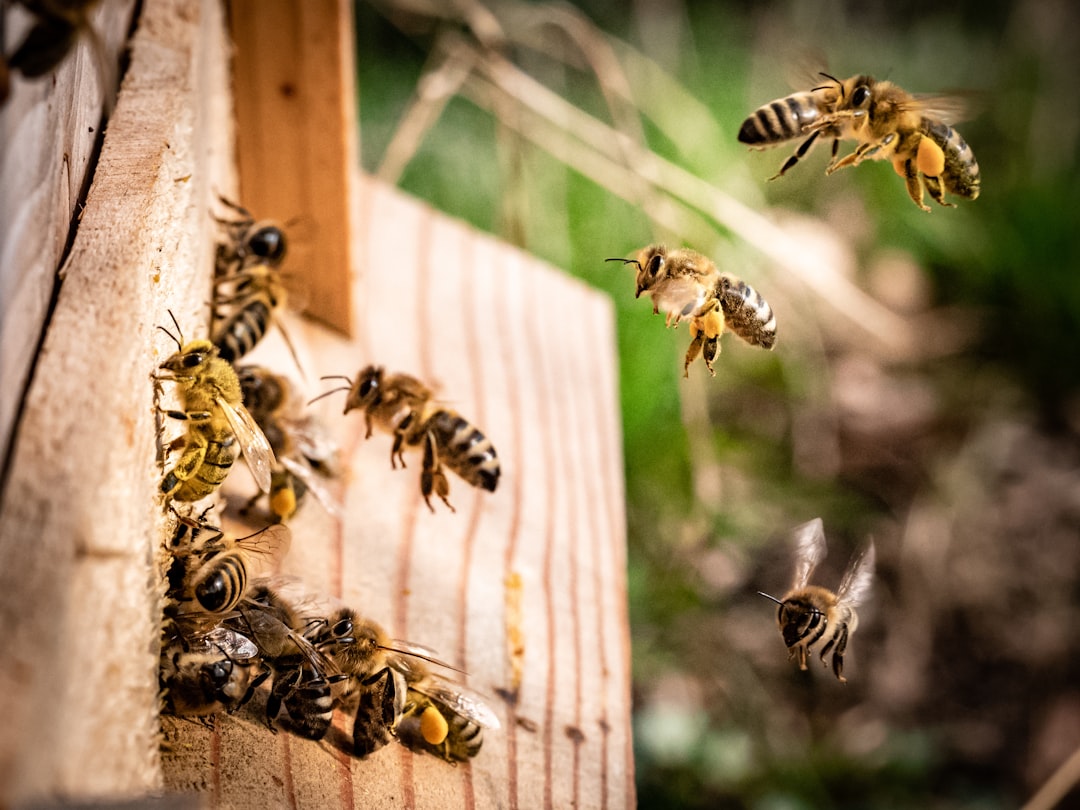Pesticides play a crucial role in modern agriculture, helping to control pests and maintain crop yields. However, their use can have unintended consequences on non-target organisms, including honey bees. Honey bees are vital pollinators, and their health is essential for maintaining ecosystem balance and food security. Here, we explore the risks pesticides pose to honey bee health, focusing on neonicotinoids and other harmful chemicals, and discuss mitigation measures to reduce these impacts.
The Risks of Pesticides to Honey Bees
Pesticides can affect honey bees in several ways:
-
Neonicotinoids: These are a class of insecticides that have been linked to significant declines in bee populations. Neonicotinoids, such as imidacloprid and clothianidin, can impair bee navigation, reduce taste sensitivity, and affect learning abilities, all of which impact foraging efficiency and colony stability. They can also enhance the replication of viruses like Deformed Wing Virus (DWV) by suppressing bee immune systems.
-
Herbicides and Fungicides: While traditionally considered less harmful to bees, recent studies suggest that herbicides like glyphosate can disrupt bee gut microbiota, affecting immunity and development. Fungicides can also have negative impacts, though they are generally less studied in this context.
-
Pesticide Mixtures: The combined effects of different pesticides can be more harmful than individual exposures. This synergistic effect complicates the assessment of pesticide risks to bees.
Mitigation Measures
To reduce the impact of pesticides on honey bees, several strategies can be employed:
-
Avoid Pesticide Application During Bloom:
-
Refrain from applying pesticides when plants are flowering, as this is when bees are most active and vulnerable.
-
Use alternative methods like mowing flowering weeds instead of applying herbicides.
-
-
Choose Bee-Friendly Pesticides:
-
Opt for pesticides with lower toxicity to bees. Always read labels and follow instructions carefully.
-
-
Inform Beekeepers:
-
Provide prior notice to beekeepers about pesticide applications on or near their properties. This allows them to take protective measures.
-
-
Integrated Pest Management (IPM):
-
Implement IPM practices that minimize chemical use, focusing on cultural, biological, and physical controls.
-
-
Support Bee-Friendly Landscapes:
-
Promote diverse floral resources in agricultural landscapes to support bee nutrition and resilience.
-
Challenges in Mitigation
Despite these strategies, there are challenges in effectively mitigating pesticide impacts:
-
Lack of Scientific Evidence: There is insufficient scientific evidence supporting the effectiveness of many mitigation measures, particularly for wild bees.
-
Long-Term Effects: Pesticide exposure can have lasting impacts on bee populations, affecting multiple generations.
Conclusion
The impact of pesticides on honey bee health is a complex issue that requires a multifaceted approach to mitigate. By understanding the risks posed by neonicotinoids and other chemicals, and implementing effective mitigation strategies, we can work towards reducing these impacts and supporting the health of these vital pollinators. Whether through changes in agricultural practices or broader environmental policies, protecting honey bees is essential for maintaining ecosystem health and ensuring food security.
Citations:
- https://pmc.ncbi.nlm.nih.gov/articles/PMC7291294/
- https://www.pnas.org/doi/10.1073/pnas.1314923110
- https://beyondpesticides.org/dailynewsblog/2023/07/insufficient-scientific-evidence-on-mitigation-measures-to-protect-bees-from-pesticides-study-finds/
- https://www.nature.com/articles/s41467-024-52421-3
- https://xerces.org/sites/default/files/2018-05/16-023_01_XercesSoc_ExecSummary_How-Neonicotinoids-Can-Kill-Bees_web.pdf
- https://ipm.ucanr.edu/mitigation/protect_bees.html
- https://www.ucdavis.edu/climate/news/pesticides-can-affect-multiple-generations-bees
- https://pmc.ncbi.nlm.nih.gov/articles/PMC4312970/
- https://www.dpi.nsw.gov.au/animals-and-livestock/bees/management/pesticides2/pesticides-reducing-damage-to-honey-bees

Comments
No comments yet. Be the first to comment!
You must be logged in to comment. Login